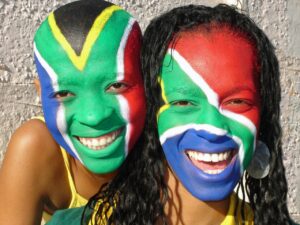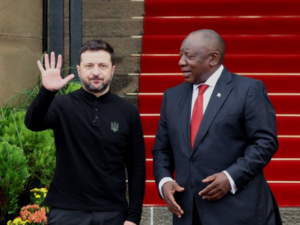[imagesource: Twitter / Rico Basson]
Here’s some Monday food for thought: the honey you’re consuming may not actually be honey.
Especially if the honey is in one of those squeeze bottles, or if the location identified on the label features the words ‘and/or’.
Although this isn’t necessarily hot off the press, as we reported on the fake honey scandal in South Africa back in 2018, the problem is getting global attention and World Bee Day may have added an increased buzz.
The SA Bee Industry Organisation had a workshop last Thursday (on World Bee Day) to unpack the growing problem of honey adulteration and its threat to biodiversity, reports The Daily Maverick.
They hope to send a message for consumers, regulators, and retailers to vote with their wallets and stem the rising tide of fake honey.
Out of all these high-demand food products, honey fraud has particularly increased and evolved because it is a more complex product that makes testing its authenticity rather expensive.
Honey is defined by the Codex Alimentarius (1981), which is a collection of internationally accepted standards of practice to protect consumer health and ensure fair practices in the food trade, as follows:
“[Honey is a] natural sweet substance produced by honey bees from the nectar of plants or from secretions of living parts of plants or excretions of plant-sucking insects on the living parts of plants, which the bees collect, transform by combining with specific substances of their own, deposit, dehydrate, store and leave in the honeycomb to ripen and mature”.
Honey is made purely from nectar and plant parts and doesn’t need any added ingredients.
Consumers need to be aware that a product cannot be described as honey if anything is added to it.
But this hasn’t stopped many retailers selling products as honey when they are not 100% pure, according to food and patent attorney Janusz Luterek.
Fake honey can be made in many different ways:
Through dilution with artificially manufactured syrups; the harvesting of immature honey (which demands human intervention in the product to prevent fermentation); using ion-exchange resins to remove/or reduce residues and/or lighten colour; masking or mislabelling of geographic or botanical origins indicators; and artificial feeding of bees during nectar flow.
Retailers are probably just responding to the overwhelming demand for honey, though.
We all love and want it so much that it is the third most adulterated food in the world, after milk and olive oil.
Fraud and product adulteration fills the gaps when supply cannot meet demand, and this has become an international problem, said Professor Norberto Garcia, the Argentinian president of the Apimondia Scientific Commission of Beekeeping Economy:
“Every year the world demands 23 000 tons more [honey],” Garcia said.
The paradox is that while the product is increasingly in demand, it is more difficult to produce every year, and yet honey prices have decreased massively.
This shows that honey exports from places like China are suspicious as they provide the cheapest honey, but they also don’t have enough bee colonies to support this export market.
This can only mean that China, and some other countries, too, are adultering their products.
South Africa’s beekeepers, for example, can meet only half of the consumer demand for honey, so the rest is imported, mainly from China, as well as Zambia, Poland, Uruguay, and Romania.
To make matters worse, country of origin labelling is really murky and confusing, saying the product is from “South Africa and/or Argentina/China/Australia/Brazil/Uruguay/Zambia”, for example.
This is taking a toll on local beekeepers, undercutting their prices and undermining their practice. It is also really detrimental to our local biodiversity.
While honey legislation and standards are in urgent need of an update, consumers can also play a role by checking what we buy and phasing out brands that are implicated in adulteration.
[source:dailymaverick]





